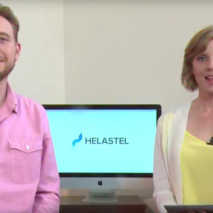The Internet of Things is a dreadful name and – the IoT – an infuriating little acronym.
The big question is, what on earth does it mean for your business? Specifically, what could you be missing out on if you fail to get your head around it?
Potentially:
- Optimised business processes for higher profitability
- Deeper data-driven insights for better business intelligence
- Service innovation for greater sales revenue
- Competitive differentiation for customer loyalty and longevity in a rapidly changing world
All IoT means is computerising and connecting that which is not currently computerised or connected.
Yes it really is that simple, if you didn’t know it already.
You may have heard of the infamous ‘Internet fridge’, an apparently preposterous concept on the face of it but one that – through the use of simple sensors and a Wi-Fi connection – is projected to reduce costs across the global food and drink industry by 15%.
There are many more example your business could be taking advantage of.
And rest assured, IoT is a big deal for businesses.
According to eggheads at the McKinsey Global Institute, the IoT will have a total economic impact of up to $11 trillion by 2025. Gartner – the research group – predicts there will be more than four times as many of these ‘things’ as human beings by 2020. This is not a fad.
But what if you aren’t in fridge manufacturing or the food and drink business?
Whatever your organisation does, it has the potential to benefit from IoT. Here’s a simple framework for understanding what to do next:
Start by thinking about the everyday things your business does
If you haven’t mapped out all your core business processes before, then IoT could be the perfect catalyst. These are all the processes and workflows of your organisation, including mundane back-office activities as well as those involving how you service customers and operate your supply chain.
Write it all out in boxes and arrows, and then…
Work out where all the data goes
Data is like water; it hydrates processes and runs everywhere across your organisation. Customers create it and demand it. You can’t make decisions without it. This is a critical part of understanding how better use of technology in general – not just IoT- can benefit your organisation.
With regard to IoT, remember that it’s as much as about using new tiny sensors that collect data, as ‘converting’ a traditionally uncomputerised, unconnected device like a fridge.
Don’t pigeonhole IoT as something you only make savings from or make revenues from
Forget about Fitbit fitness trackers, Google driverless cars – even the Babolat ‘smart’ tennis racket. These are IoT gadgets that don’t fundamentally change the underlying business model. IoT can revolutionise a business like John Deere, the tractor maker. Thanks to IoT, their market proposition has evolved beyond manufacturing a quality machine to giving farmers data insight into which crops to plant where, when to harvest them and the optimum ploughing route.
Remember that IoT often spawns sexy new innovative services from boring old business process optimisation, and vice versa.
Use your imagination
There ARE lots of other applications for IoT but, even if they seem scarce in your industry right now, look on the bright side: you could yet innovate new ones to steal a march on your competitors.
Ever tracked a parcel or delivery order online?
Logistics companies pioneered ‘the IoT’ while the term was still in short trousers.
Picture the process of sending a parcel from your local delivery point to an address 500 miles away. Shipping crate to van to distribution centre to lorry to bigger distribution centre to lorry to yet another distribution centre to van to address. Spot the Internet. Spot the computers.
It’s all there thanks to barcode readers, GPS positioning systems, RFID tags and data capture sensors.
Now return to the 4 ‘things’ at the top of this blog that define the benefits of IoT, and you’ll see they are all here:
- A completely visible and manageable end-to-end process that operations managers can measure, fine tune and identify improvements.
- A huge amount of primary data that the organisation can use to detect opportunities e.g. most large parcels are sent on a Thursday, people are mostly absent from their addresses between 10:00am and 10:30am, the Luton local distribution centre is on average the longest to get to from the nearest national distribution centre, Sheffield is the least efficient service area by ‘delivery per mile per gallon’.
- An innovative premium new service (at the time) providing customers with added peace of mind about urgent or sensitive deliveries.
- A service that differentiated its early adopters; now an essential part of all logistics service offerings that don’t wish to be left behind.
All of this was made easy to achieve and relatively cheap to execute thanks to IoT. Without those clever IoT capabilities, the whole enterprise would be prohibitively labour intensive and inaccurate.
Why not let the machines do the work for a change?
We’re following the latest IoT developments closely because – as software developers – we’re always excited about any enhanced ways to develop new services and optimise processes so that our customers become more profitable.
IoT is certainly part of our background thinking when we sit down and understand a client’s challenges. Isn’t it time it was part of yours?

